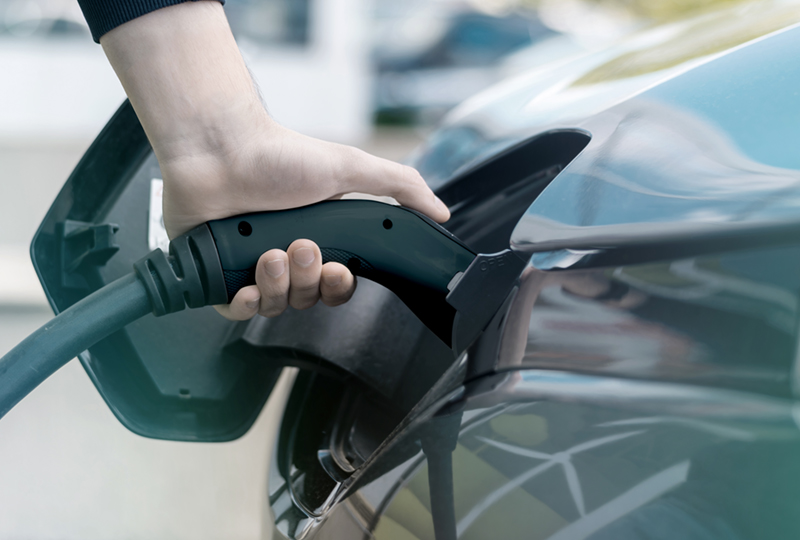
Across the U.S., electric vehicle (EV) adoption continues to gain traction. In 2022, one in 10 cars purchased in the country was an EV—a figure that would have been unfathomable not long ago.
The pace of adoption is uneven, though, with much faster rates of change in wealthy and middle-class communities than in low-income areas. As the International Council on Clean Transportation (ICCT) reports, households earning less than $100,000 account for 72% of all gasoline vehicle purchases, while they only represent 44% of EV purchases. For some EV models, adoption rates are as much as 15 times higher in the top 20% of ZIP codes. Meanwhile, in California, the median income of EV buyers is $150,000, 66% higher than the $90,000 median income for gas car buyers.
These disparities do more than slow the nation’s progress toward electrification. They also mean that those in low-income communities find it much harder to tap into the benefits of electric vehicles.
Many low-income households, for example, are overwhelmingly burdened by transportation costs, and more than half of them (8.3 million households) will continue to be burdened without access to electric vehicles. They also disproportionately experience air quality issues —and related health problems—which could be alleviated in part by reducing fuel emissions in low-income areas.
As long as these disparities continue, the U.S. is selling itself and its citizens short of what EVs have to offer. To find a more equitable path toward EV adoption, policymakers, vehicle and charging station manufacturers, and community members must focus on four key practices.
Engage low-income communities
As is critical with any issue affecting underrepresented groups, the first step toward equity is engagement. Rather than merely assuming that they understand how to increase adoption in low-income communities, policymakers and other key players must take the time to engage with key stakeholders in those communities.
No low-income community is identical to the next, and each faces its own unique challenges on a local level. Policies and programs must address those specific challenges rather than imposing generic solutions that don’t apply. That requires asking questions and giving a voice to those in each community.
Engagement is a two-way process, though, and it’s also important to provide resources and opportunities to educate members of low-income communities on the benefits of EVs and the incentives available to make adoption more attainable for them. Broader adoption means not only potential health improvements and transportation cost savings but also new employment opportunities in EV manufacturing.
Establish programs to expand EV access
The current federal tax credit for many EVs (including used ones) makes adoption more realistic for many Americans. To expand access even further, however, more programs are needed on the state and local level—from government policies, local utilities, and private companies.
Cash rebates can provide strong incentives as long as they’re structured properly. For instance, rebates shouldn’t be treated as taxable income, and buyers should be able to combine them with other incentive programs. California leads the way with several rebate programs for different qualifying buyers and EV purchases, but several other states currently have programs in place.
Utility companies can also push EV adoption in low-income communities by offering credits or rebates on customer utility bills when they purchase new or used electric vehicles. Finally, employers can even do their part by electrifying their fleets and letting workers take them home, as is common with gas vehicles. This may require some additional investment in home chargers, but the payoff in terms of equitable access to EV benefits is well worth it.
Expand EV charging access
The need for home charging for fleet vehicles points to perhaps an even larger barrier to EV adoption in low-income communities: charging station access. Even if low-income buyers can find a way to afford an electric vehicle, they still need a way to charge it, and this is often hard to come by. One study of different neighborhoods in New York City, for instance, showed significant income and racial differences between neighborhoods with and without charging stations.
Again, recent federal policy changes aim to address this issue. The National Electric Vehicle Infrastructure (NEVI) Formula program targets urban and rural communities without current access to EV charging, and many taxpayers can get a credit of up to 30% of the cost[9] (up to $1,000) of installing a home EV charging station.
However, the current disparities in EV adoption are too large for these programs to address alone. Private companies, utilities, and other organizations must cooperate to create more creative solutions to expand charging station access in low-income communities.
Focus on public transportation
Focusing solely on EV ownership would fall short of fully addressing the needs of many low-income Americans. As the ICCT report notes, more than 25% of households earning less than $25,000 per year don’t even own a gas vehicle, much less an electric one. Rather, they rely on public transportation to meet their needs.
A robust plan for EV adoption in low-income communities must also, therefore, include a plan for electric buses, taxis, and other means of public transportation. Electric buses, in particular, offer many of the same potential benefits for low-income communities that EVs do, including reduced air and noise pollution. Many existing buses rely on diesel, making them louder, more expensive to produce, and slightly more emissions-intensive than standard gasoline vehicles.
As a result, the electrification of bus fleets should be a top priority in municipal public transportation sectors. This transformation is already in progress, but more policies could be implemented to accelerate the process.
Paving the path toward EV adoption equity
Equity in EV adoption is one of the key issues to address as the U.S. pushes toward its electrification goals. The country has made significant progress, but greater strides will be elusive until more low-income residents can access EVs and charging stations.
